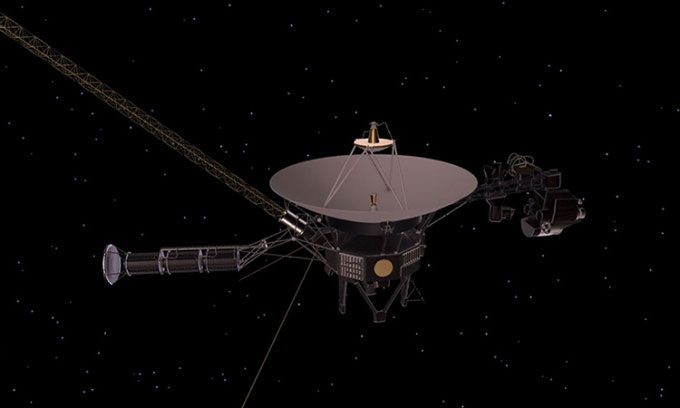The Voyager 1 spacecraft, located 23.5 billion kilometers away, continues to operate in interstellar space after NASA addressed issues related to one of its computers.
After several months of sending back corrupted data to the control station on Earth, NASA’s Voyager 1 has resumed operations, sending clear data about its status in interstellar space beyond the Solar System, Space reported on August 31.

Illustration of Voyager 1 operating in interstellar space. (Photo: NASA)
NASA first reported the malfunction of this 45-year-old spacecraft back in May. Experts identified that the problem was somewhere in the AACS – the system that keeps the spacecraft’s antenna pointed towards Earth.
“The AACS sends data remotely through a computer onboard that stopped functioning years ago, which corrupted the information,” NASA experts stated in a notice on August 30. The rest of Voyager 1 appears to be functioning normally and collecting data as expected.
When suspicions arose that Voyager 1 was using a “dead” computer, engineers sent commands to the spacecraft to have the AACS use a different computer for communication. This repair method carries low risk but is time-consuming. A radio signal takes nearly 22 hours to reach Voyager 1, which is 23.5 billion kilometers away from Earth and continues to move further out.
With the data issue on Voyager 1 resolved, NASA is now investigating another mystery: What caused this malfunction?
“We are very pleased to be receiving remote measurement data again. We will read all the memory information of the AACS and review everything it is doing. This will help us determine the cause of the issue,” said Suzanne Dodd, the Voyager project manager.
Engineers suspect that Voyager 1 began experiencing data issues after receiving a bad command from another computer onboard. This could indicate that other problems may be lurking within the spacecraft’s computer system. However, the mission team does not consider this a threat to the long-term health of the spacecraft.
NASA launched Voyager 1 along with its “twin” Voyager 2 into space in 1977 with the mission to explore planets beyond the Solar System. Voyager 1 flew past Jupiter and Saturn before continuing its journey, entering interstellar space in 2012. Voyager 2 reached this milestone in 2018.


















































